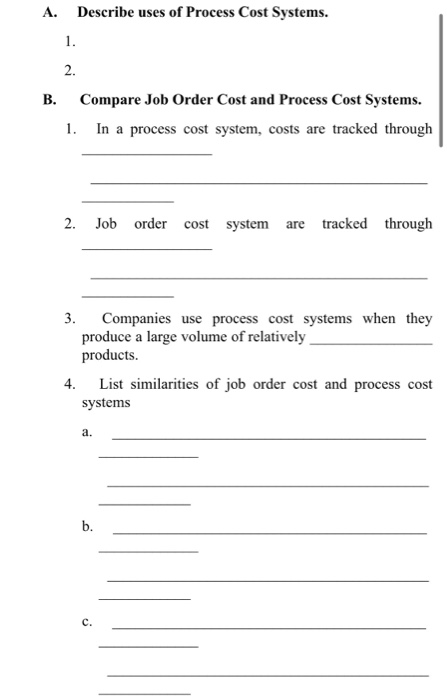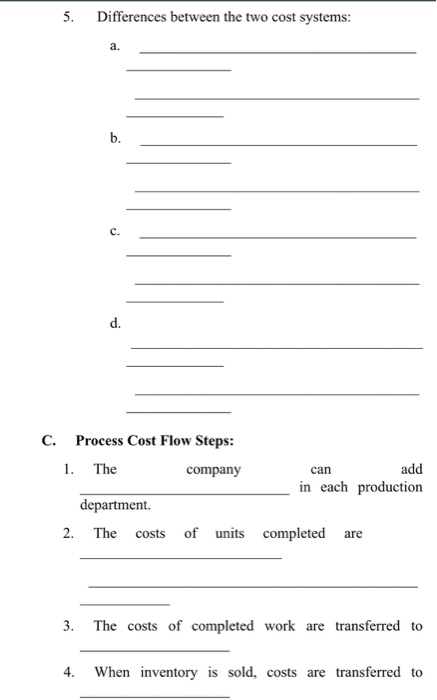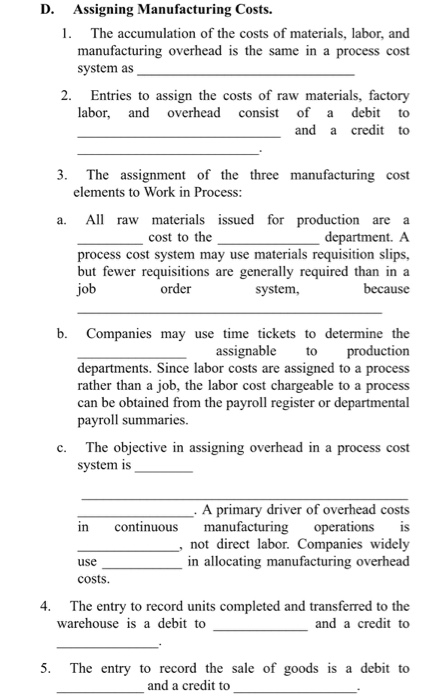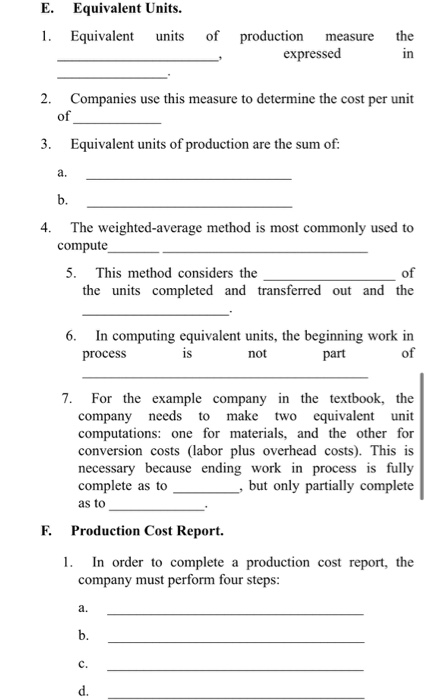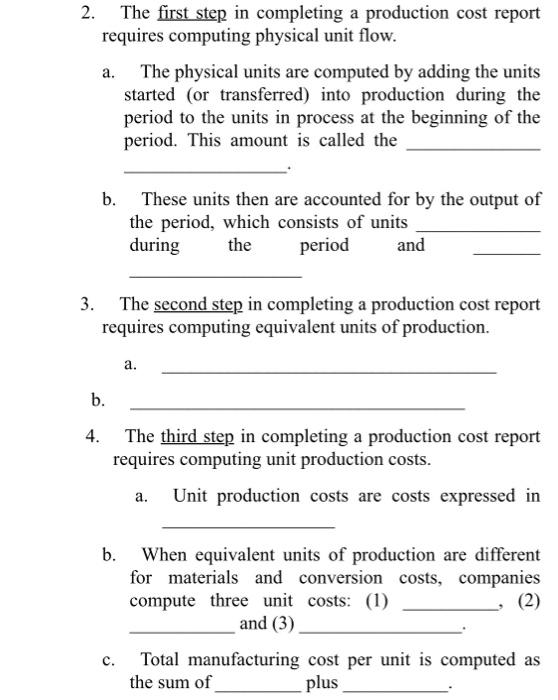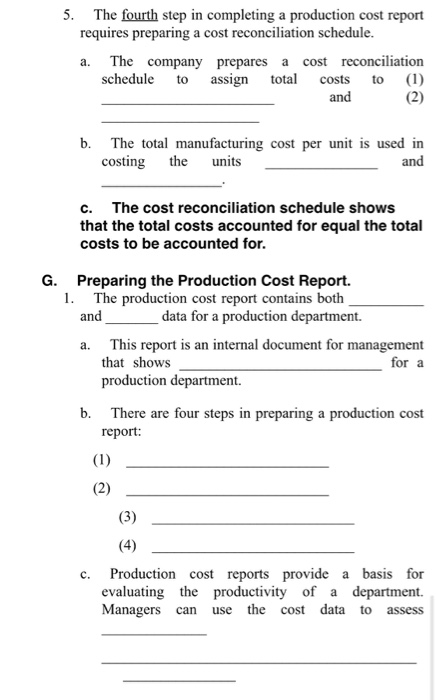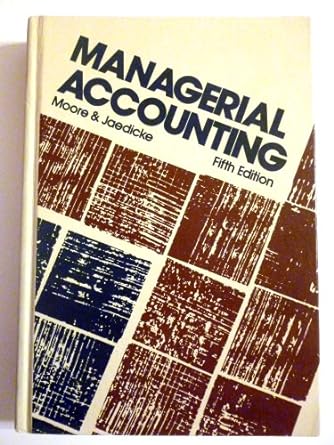A. Describe uses of Process Cost Systems. 1. 2. B. Compare Job Order Cost and Process Cost Systems. 1. In a process cost system, costs are tracked through 2. Job order cost system are tracked through 3. Companies use process cost systems when they produce a large volume of relatively products. 4. List similarities of job order cost and process cost systems a. b. C. 5. Differences between the two cost systems: a. b. d. C. Process Cost Flow Steps: 1. The company can add in each production department. 2. The costs of units completed are 3. The costs of completed work are transferred to 4. When inventory is sold, costs are transferred to D. Assigning Manufacturing Costs. 1. The accumulation of the costs of materials, labor, and manufacturing overhead is the same in a process cost system as 2. Entries to assign the costs of raw materials, factory labor, and overhead consist of a debit to and a credit to a. 3. The assignment of the three manufacturing cost elements to Work in Process: All raw materials issued for production are a cost to the department. A process cost system may use materials requisition slips, but fewer requisitions are generally required than in a job order system, because b. Companies may use time tickets to determine the assignable to production departments. Since labor costs are assigned to a process rather than a job, the labor cost chargeable to a process can be obtained from the payroll register or departmental payroll summaries. c. The objective in assigning overhead in a process cost system is A primary driver of overhead costs in continuous manufacturing operations is not direct labor. Companies widely in allocating manufacturing overhead costs. 4. The entry to record units completed and transferred to the warehouse is a debit to and a credit to use 5. The entry to record the sale of goods is a debit to and a credit to E. Equivalent Units. 1. Equivalent units the of production measure expressed in 2. Companies use this measure to determine the cost per unit of 3. Equivalent units of production are the sum of: a. b. 4. The weighted-average method is most commonly used to compute 5. This method considers the of the units completed and transferred out and the 6. In computing equivalent units, the beginning work in process is part of not 7. For the example company in the textbook, the company needs to make two equivalent unit computations: one for materials, and the other for conversion costs (labor plus overhead costs). This is necessary because ending work in process is fully complete as to but only partially complete as to E. Production Cost Report. 1. In order to complete a production cost report, the company must perform four steps: a. b. C. d. 2. The first step in completing a production cost report requires computing physical unit flow. a. The physical units are computed by adding the units started (or transferred) into production during the period to the units in process at the beginning of the period. This amount is called the b. These units then are accounted for by the output of the period, which consists of units during the period and 3. The second step in completing a production cost report requires computing equivalent units of production. a. b. 4. The third step in completing a production cost report requires computing unit production costs. a. Unit production costs are costs expressed in b. When equivalent units of production are different for materials and conversion costs, companies compute three unit costs: (1) (2) and (3) Total manufacturing cost per unit is computed as the sum of plus c. 5. The fourth step in completing a production cost report requires preparing a cost reconciliation schedule. The company prepares a cost reconciliation schedule assign total costs to (1) and (2) a. to b. The total manufacturing cost per unit is used in costing the units and C. The cost reconciliation schedule shows that the total costs accounted for equal the total costs to be accounted for. G. Preparing the Production Cost Report 1. The production cost report contains both and data for a production department. a. This report is an internal document for management that shows for a production department b. There are four steps in preparing a production cost report: (2) (3) c. (4) Production cost reports provide a basis for evaluating the productivity of a department. Managers can use the cost data to assess
